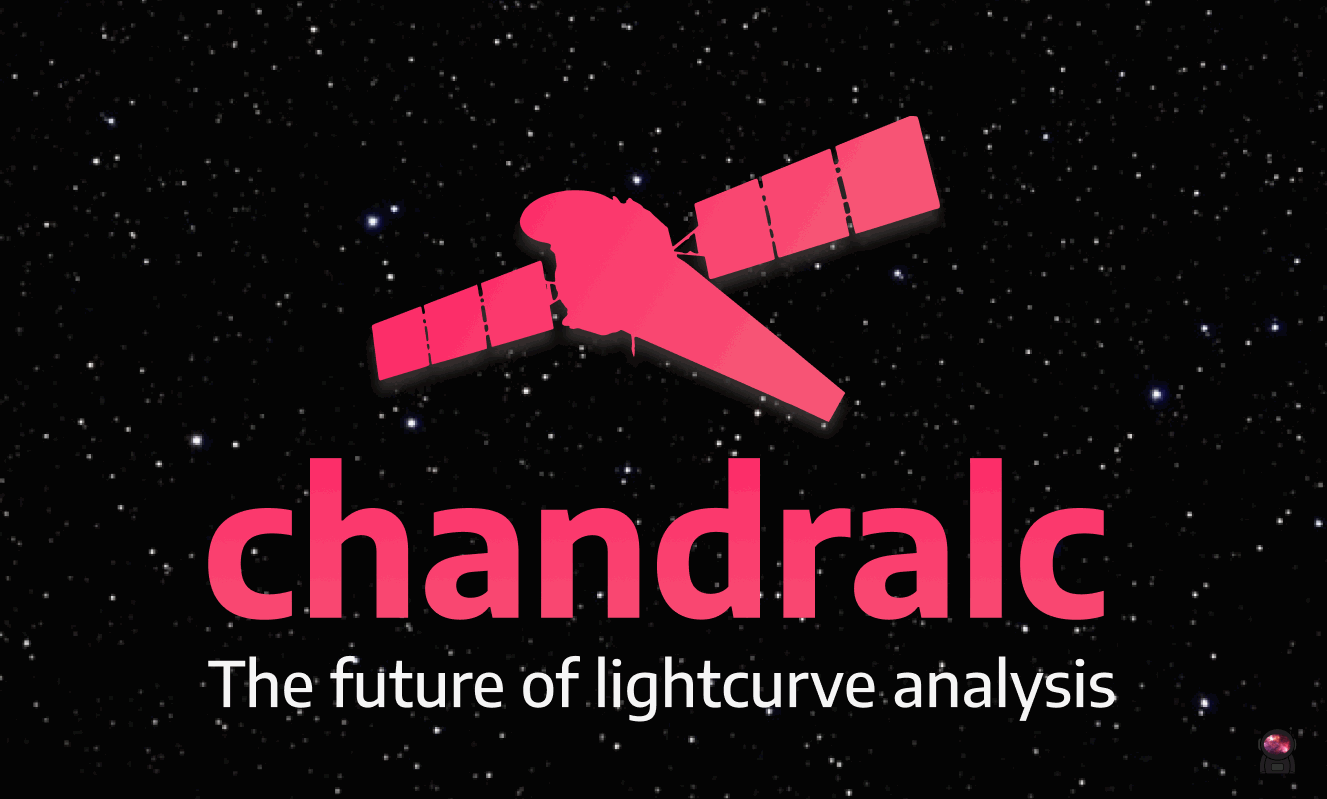
# chandralc: A Python Package for CXO Lightcurve Analysis
<p align="left">
<a href="https://github.com/sammarth-k/chandralc/blob/main/LICENSE.txt"><img src = "https://img.shields.io/github/license/sammarth-k/chandralc?logo=MIT"></a>
<a href="https://pypi.org/project/chandralc"><img src="https://img.shields.io/pypi/v/chandralc?color=blue"></a>
<img src="https://img.shields.io/github/v/tag/sammarth-k/chandralc?color=red">
<a href="https://github.com/psf/black"><img alt="Code style: black" src="https://img.shields.io/badge/code%20style-black-000000.svg"></a>
The `chandralc` Python package was developed to analyze Chandra X-ray Observatory lightcurves in a matter of seconds. With algorithms and programs to automatically extract, download, plot, and analyze data, it is the perfect tool to study CXO lightcurves efficiently and accurately.
`chandralc` is the perfect tool for citizen science. If you're interested in detecting extragalactic planets, feel free to shoot me an email at sam@qprogramming.net!
To see ``chandralc`` in action, check out [the demo](https://github.com/sammarth-k/chandralc/blob/main/demo.ipynb) (currently in development).
### Features:
#### Lightcurve Extraction
Extract lightcurves from one or more ObsIDs automatically. This feautre is not yet available publicly.
#### Downloads:
- Large database of over 150,000 lightcurves from 10,000+ X-ray Sources
- Downloading extracted lightcurves from 19+ galaxies.
- Search for lightcurves with J2000 coordinates
- Retrieve galaxy from lightcurve file names
#### Convert:
- Convert FITS lightcurves to ASCII txt files
#### Analysis:
##### Observation Details
- Total counts
- Observation time (in kiloseconds)
- Count rate (kiloseconds (`rate_ks`), seconds (`rate_s`))
- Source coordinates (J2000 format)
- ObsID (Observation ID of the lightcurve)
- Galaxy (Messier or NGC)
#### Plots
- Cumulative Count plots over time to view net counts over time
- Lightcurves with custom binning to view data in the form of count rate per bin or net counts per bin over time.
- Power Spectral Density (PSD) to identify periodicity and their time periods/frequencies.
- Running Average Plot
#### State Detection
Note: the flare detection algorithm is currently under development and has not been extensively tested. The eclipse detection algorithm has been tested on a sample of 150,000+ X-ray lightcurves and it was able to rediscover known transits and eclipses (including that of the first extragalactic planet candidate). It has also been used by the author of this package to make new discoveries.
- Flares
- Eclipses
#### Astrophysics Database Connection
- NASA ADS
- Search for listings which include the source
- Simple usage: only one method required (`.search_ads()`)
##### Upcoming features:
- Integration with [galaXy]()
- VizeR connection
### Installation
1. Install dependencies via the `requirements.txt` file: `pip install requirements.txt`
2. Install the `chandralc` package via PIP: `pip install chandralc`
3. File Databases will automatically be downloaded on import of package
[more details coming soon]
##### Cite chandralc
If you use ``chandralc`` in your research, please cite it as follows:
```tex
@MISC{chandralc,
author = {{Kumar}, Sammarth},
title = "{chandralc: Python Package for CXO Lightcurve Analysis}",
keywords = {Software, Chandra, CXO, lightcurves },
url = {https://github.com/sammarth-k/chandralc},
howpublished = {https://github.com/sammarth-k/chandralc},
year = {2021},
month = {May},
}
```




